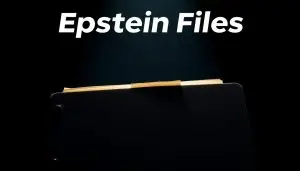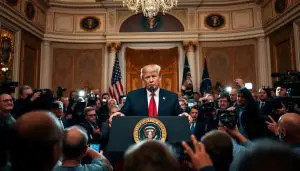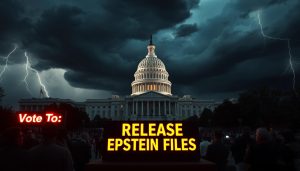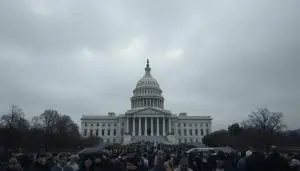Government Shutdown: Good Opportunity to Remove Unwanted Federal Employees?
Explore the ramifications of a government shutdown and whether it’s a chance to reassess federal workforce needs.

Government Shutdown: Good Opportunity to Remove Unwanted Federal Employees?
Click to summarize this article.
The Government Shutdown has started, bringing high stakes and sharp edges. President Donald Trump plans to push his economic agenda forward, even with agencies slowing down. Tariffs can continue, and a $20 billion currency swap for Argentina is on track.
The White House is exploring presidential powers in a budget standoff. This could change the federal workforce and the economy’s impact.
Senior aides view the shutdown as an opportunity to push for policy and personnel changes. They use a crisis-ops playbook, never letting a crisis go to waste. Allies view it as a stronger reform effort than before, describing it as a revival of the old efficiency push.
Major unions have sued, saying threats to fire workers before a deal are illegal. For context, see this analysis of mass departures and department-by-department reductions.
Budget Director Russell Vought has paused about $18 billion in infrastructure funds for New York City. This has drawn fire from Senate Majority Leader Chuck Schumer. With Congress stuck and data releases paused, the economic impact is growing. The federal workforce faces deeper uncertainty.
Policy signals, such as new tariff timelines and spending clawbacks, suggest a broader strategy. Early outlines of proposed reductions are circulating in Washington, and reports about federal budget cuts worth billions.
Government Shutdown Key Takeaways
- The Government Shutdown is being used to advance an economic agenda despite agency slowdowns.
- Tariff actions and a Treasury-backed $20 billion Argentina swap continue under existing authorities.
- The White House is testing presidential powers that could affect the federal workforce and programs.
- Unions have filed lawsuits, alleging unlawful threats aimed at pressuring employees and Congress.
- OMB, led by Russell Vought, paused about $18 billion for New York City, drawing criticism from Chuck Schumer.
- Prolonged gridlock increases the economic impact and heightens operational risk across agencies.
- Signals indicate that policy moves are likely to expand, even as nonessential functions and federal data releases are paused.
Shutdown Context: Federal Government Closure, Political Impasse, and Budget Gridlock
The latest federal government shutdown highlights a deep-seated political standoff and budget gridlock. Agencies cut back, contractors wait, and families look for updates. Leaders blame each other as the economic impact grows.
What triggered the current congressional standoff and funding halt
Funding was halted after the Senate failed to pass the plans twice. This failure led to a congressional standoff with no quick fix. It also showed how budget gridlock can stop even routine funding.
As the shutdown began, estimates showed furloughs and delayed pay across the country. Reports indicated that hundreds of thousands might not receive payment, which would significantly impact local economies. Approximately 40% of workers could be affected, with the White House considering the elimination of “non-essential” jobs. More on this is in this CBO estimate and White House posture.
How a prolonged shutdown intensifies the White House’s leverage
A long shutdown gives the White House more power over programs and timing. By deciding what to keep going, the White House can influence talks. This also affects markets, causing delays in permit approvals, grant disbursements, and the release of data.
Recent moves, such as the Office of Management and Budget holding back funds for New York City, demonstrate how priorities shift during a shutdown. This strategy aims to capitalize on the political standoff to gain leverage while Congress is stalled.
Historical playbook: “Never let a crisis go to waste” in modern politics
Modern leaders often use crises to expedite the achievement of long-stalled goals. This includes cutting staff, taking trade actions, or making financial moves during budget gridlock.
Union leaders and policy groups, such as the Center for American Progress, argue that the shutdown law doesn’t allow for permanent layoffs. Yet, the push to gain an advantage continues. This is evident in reports on the funding fight, as outlined in this overview of the budget crisis. It shows how the economic impact shapes messaging and outcomes.
Government Shutdown
The current Government Shutdown has given more power to the executive branch. Administrative authority is guiding agency plans. Despite the absence of federal funding, some projects continue due to laws and national security requirements.
President Donald Trump believes shutdowns can be beneficial. He wants to cut programs and reduce the workforce. Two unions have sued, questioning these plans and the rights of workers.
Russell Vought, at the Office of Management and Budget, makes key decisions. He has frozen $18 billion in New York City funds, citing “unconstitutional DEI principles.” Sen. Chuck Schumer and city leaders have criticized this move.
The Senate has not passed spending bills, leading to a possible more prolonged shutdown. This could mean delayed paychecks and services for many.
Households are feeling the effects as benefits and data releases slow down. For updates on Social Security delays, see this brief. Health policy disputes are also affected, with changing state rules detailed here: what you need to know.
In the West Wing, some view this as an opportunity to reform the government. But any plans to cut the workforce face legal hurdles. Agencies are trying to balance necessary cuts with respecting the law.
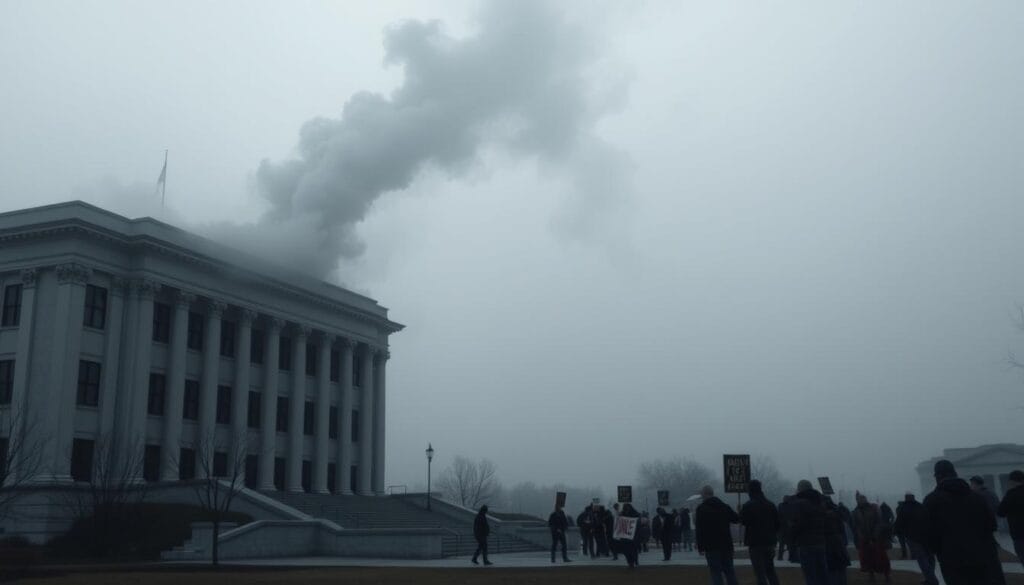
Policy Moves Continuing Despite the Federal Funding Halt
Even with a federal funding halt, the administration continues to move forward. Agencies utilize their existing powers to advocate for trade, finance, and budget measures. At the same time, they pause core services. This creates a steady flow of actions that shape markets at home and abroad.
Tariff rollouts proceed under Section 232 investigations on national security grounds.
Commerce keeps Section 232 inquiries open, citing national security. This allows work to continue during the shutdown. Tariff rollouts impact critical inputs, from minerals to chips, and affect timelines that investors closely track. The approach demonstrates that trade enforcement is a key component of the economic agenda.
For context on how these moves ripple through finance, see live updates on the shutdown’s reach in real-time market oversight. Regulators and lenders face capacity strains even as trade actions advance.
New duties timetable: 100% on select pharmaceuticals, 25% on heavy trucks, and wood products next
The duty schedule is aggressive. A 100% rate now applies to a defined set of pharmaceutical imports, while a 25% tariff is levied on heavy trucks. Timber and various wood products are slated for implementation next, with progress tracked weekly. Businesses are revising their sourcing and inventory strategies to mitigate the impact, yet the policy thrust remains aligned with the stated economic agenda.
| Measure | Category | Rate | Status | Intended Impact |
|---|---|---|---|---|
| Tariff Increase | Select Pharmaceuticals | 100% | In Effect | Reshore key inputs; pressure noncompliant suppliers |
| Tariff Increase | Heavy Trucks | 25% | In Effect | Support domestic assembly and parts lines |
| Upcoming Duties | Timber & Wood Products | Variable | Scheduled | Stabilize pricing; deter dumping in housing supply chains |
Overseas negotiations: Treasury’s plan for a $20B Argentina currency swap amid data-release pauses
Overseas negotiations continue despite the delayed release of federal data. The Treasury is advancing a swap of more than $20 billion to support Argentina under President Javier Milei. The step aims to stabilize reserves and trade flows while routine reports are paused. Consumer watchdogs, including Rohit Chopra, question the move as an “inappropriate bailout,” but Treasury labels the swap essential.
Regional partners are watching spillovers across supply chains and cross-border trade exposure. This is highlighted in ongoing coverage of Canada–U.S. trade stress. Currency shifts and tariffs can significantly impact logistics.
Infrastructure funding pause: OMB move to hold roughly $18B for New York City
OMB Director Russell Vought has frozen about $18 billion in federal infrastructure support tied to New York City. He cites ideological conditions that conflict with federal law. The decision, denounced by Chuck Schumer as “stupid and counterproductive,” shows how budget levers steer priorities during a shutdown. For local agencies, the pause complicates timelines for transit, housing, and resiliency work.
These developments show how tariff rollouts, Section 232 enforcement, and overseas negotiations can proceed in parallel. This keeps the economic agenda on track even as many offices remain dark.
Government Shutdown Conclusion
The government shutdown has made budget talks more challenging and has led to a political impasse. Despite offices closing, the White House is moving forward with trade actions. These actions include new duties on items such as pharmaceuticals and trucks.
The Treasury Department is also working on a $20 billion deal with Argentina. This indicates that they’re trying to maintain market stability, despite delays at home. On the other hand, about $18 billion for New York City’s projects has been put on hold. This illustrates how the President is utilizing his authority to determine what gets accomplished.
President Trump thinks the shutdown can make agencies more efficient. But unions and policy groups disagree. They say cutting programs without clear legal grounds is a risky move. They also point out that job losses in the public sector are a big concern.
See how the shutdown affects jobs and the economy in this brief on the jobs report and the public.
The shutdown’s economic effects depend on how long it lasts and the extent to which the administration pursues its objectives. Trade penalties might help the country’s strategy but could also increase costs. Infrastructure funds being held back could change plans for states and cities.
In education, plans to change the Department of Education are being closely watched. These plans involve restructuring and reducing job positions. This is important because of the significant role the Department plays in student loans and school budgets. Learn more about this in this overview of the Department of Education.
Ultimately, this standoff is a test of power and process. It demonstrates the extent to which the President can go during a shutdown. It also illustrates how labor laws are upheld and whether markets trust that essential functions will continue to operate. Until the standoff is resolved, the country will continue to face challenges at home and abroad.
